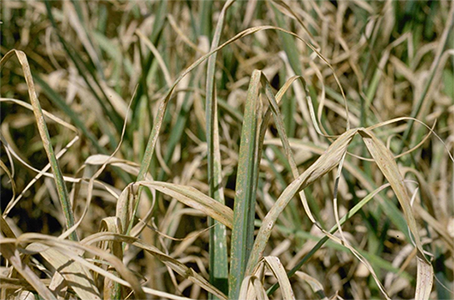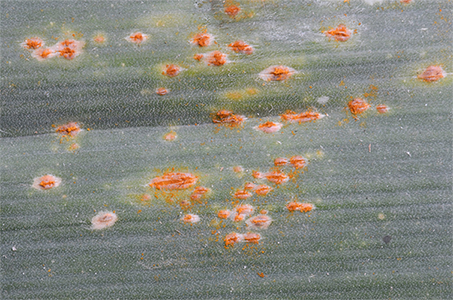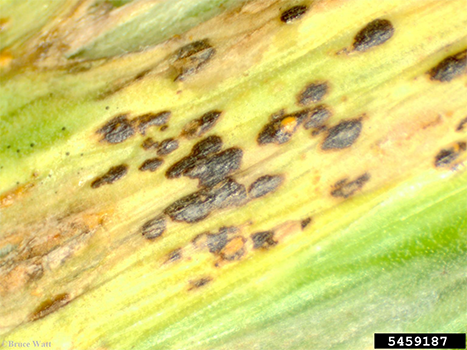Look and report
Onion rust is a declared pest in Western Australia.
What is onion rust?
Onion rust (Puccinia allii) is a fungal disease of plants in the onion family, including onions, garlic, chives, spring onions and leeks. It is sometimes called garlic rust.
Several species of rust which can affect onions, garlic and chives are not found in Western Australia. Any rust symptoms that appear on onions, garlic, shallots or chives should be reported.

What plants are affected?
Onion rust is most severe on garlic and chives but also affects onions, spring onions and leeks.
What do I look for?
- Rust appears on the leaves as bright orange or dark brown bumps along the leaf veins.
- Black or orange spores break out of the lesions as the infection develops.
- When rust infection is severe the leaves may die.

How does onion rust survive and spread?
- The rust fungus produces many spores which are spread by wind and rain splash.
- Onion rust can be spread on infected planting material such as shared mother bulbs.
- Garlic imported for human consumption may carry onion rust to new areas if planted in home gardens.
What damage can this disease cause?
Crop losses can be severe, depending on the strain of rust and the plant host. Even a few lesions can reduce marketability in crops like spring onions where the leaves are eaten.
Legal duty to report
Onion rust is not known to occur in WA. Puccinia allii (D.C.) F. Rudolphi 1829 is a declared pest under section 12 of the Biosecurity and Agriculture Management Act 2007.
This means that any person who finds or suspects the presence of onion rust must report it to the department.
WA’s freedom from onion rust is supported by general and specific surveillance and specific import requirements to prevent its entry.

